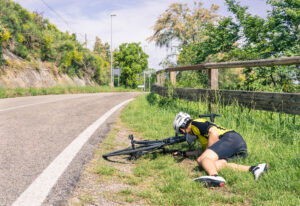Bicycles have always been a popular mode of transportation, and the importance of cycling has only increased in recent years, as people have become more aware of the environmental and health benefits of cycling. In Washington State, cycling is a popular activity, with many people using their bikes to commute, exercise, and explore the beautiful landscapes of the Pacific Northwest. However, while cycling is a great way to get around, it is important that people know how to do it safely, which is why bicycle education should be a priority in Washington schools.
Bicycle education programs teach children and adults how to safely ride a bike in traffic, how to navigate intersections, and how to use bike lanes and shared paths. These programs can also help students understand the rules of the road and how to communicate with drivers and pedestrians. With bicycle education, students can learn how to ride safely and confidently, which can help them stay active and healthy while reducing their risk of accidents and injuries.
the rules of the road and how to communicate with drivers and pedestrians. With bicycle education, students can learn how to ride safely and confidently, which can help them stay active and healthy while reducing their risk of accidents and injuries.
Bicycle education can also promote environmental sustainability by encouraging people to use bikes instead of cars for short trips. By reducing the number of cars on the road, we can help reduce air pollution, traffic congestion, and greenhouse gas emissions. Biking is also a great way to stay active and improve cardiovascular health, which can help reduce the risk of obesity, heart disease, and other health problems.
In addition to promoting health and sustainability, bicycle education can be a fun and engaging way for students to learn about science, technology, engineering, and math (STEM). By studying the physics of cycling, students can learn about concepts such as force, motion, and energy, while also learning about the mechanics of bikes and how they work.
Washington State has taken steps to promote bicycle education in schools. In 2016, the state passed the Bicycle and Pedestrian Safety Education Act, which requires school districts to develop and implement bicycle and pedestrian safety education programs for students in grades K-8. The law also requires that the programs be taught by qualified instructors and that they include both classroom and on-bike instruction.
Despite these efforts, however, there is still more that can be done to promote bicycle education in Washington schools. By providing more funding and resources for bicycle education programs, schools can help ensure that all students have access to the knowledge and skills they need to ride safely and confidently. This can help promote cycling culture in Washington state, where bikes are seen not just as a recreational activity, but as a safe and practical mode of transportation for everyone.
Bicycle education is an important component of any comprehensive education program. By teaching students how to ride safely and confidently, we can promote health, sustainability, and STEM education, while also reducing the risk of accidents and injuries. With continued investment in bicycle education programs, we can help create a safer, healthier, and more sustainable future for all Washingtonians.
Bicycle education in schools can also promote equity and access to transportation. Many low-income families may not have access to a car or public transportation, but they may have access to a bicycle. By teaching students how to ride safely and navigate their communities on a bike, schools can help promote equity and access to transportation options, especially in areas with limited public transportation.
Bicycle education can also help reduce the number of bike-related accidents and injuries in Washington state. According to the Washington State Department of Transportation, there were 1,331 bike-related collisions in the state in 2019, resulting in 1,174 injuries and 15 fatalities. By teaching students how to ride safely and confidently, we can help reduce these numbers and create safer streets and communities for everyone.
Promoting bicycle education in schools can also help instill a sense of civic responsibility in students. By teaching them about the benefits of cycling and the importance of following traffic laws, we can help create a generation of responsible and environmentally conscious citizens who are committed to making their communities safer, healthier, and more sustainable.
Bicycle education is a critical component of any comprehensive education program in Washington state. By teaching students how to ride safely and confidently, promoting health, equity, and sustainability, and instilling a sense of civic responsibility, we can help create a safer, healthier, and more sustainable future for all Washingtonians.
